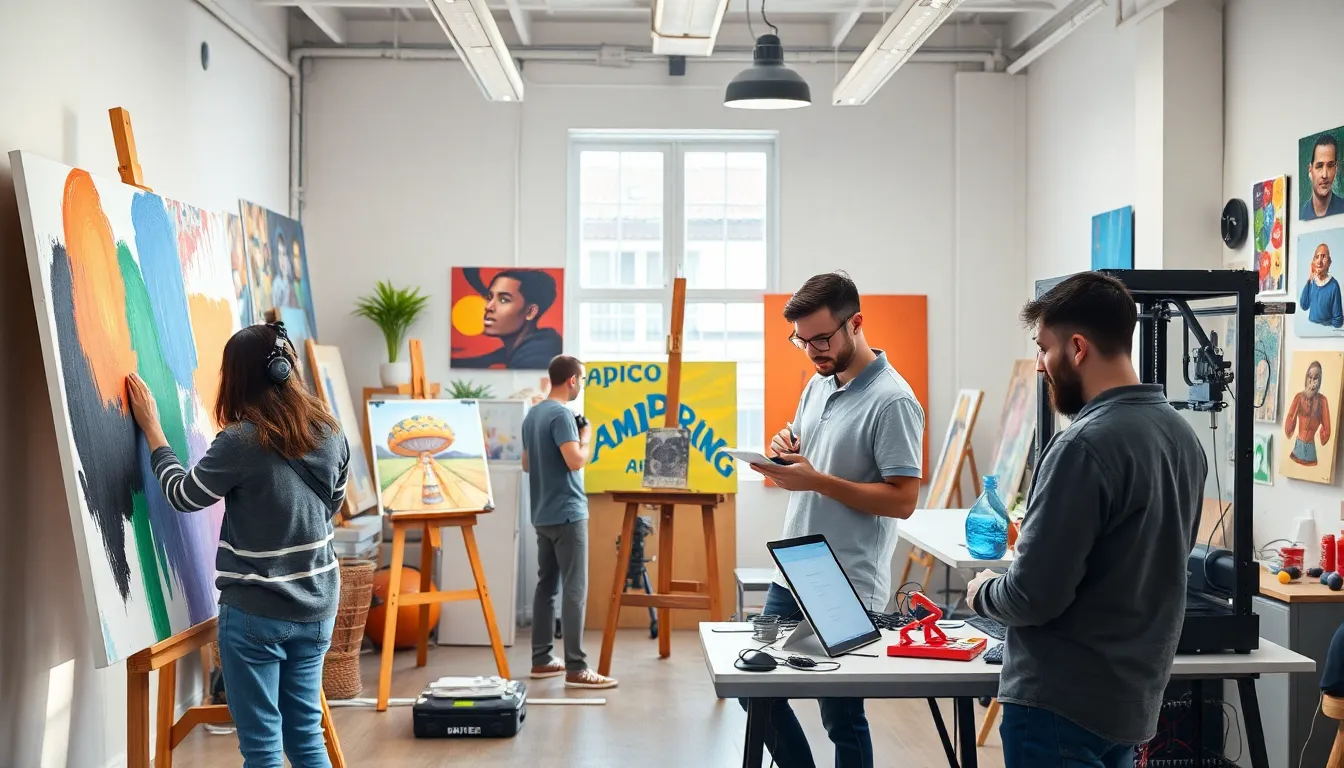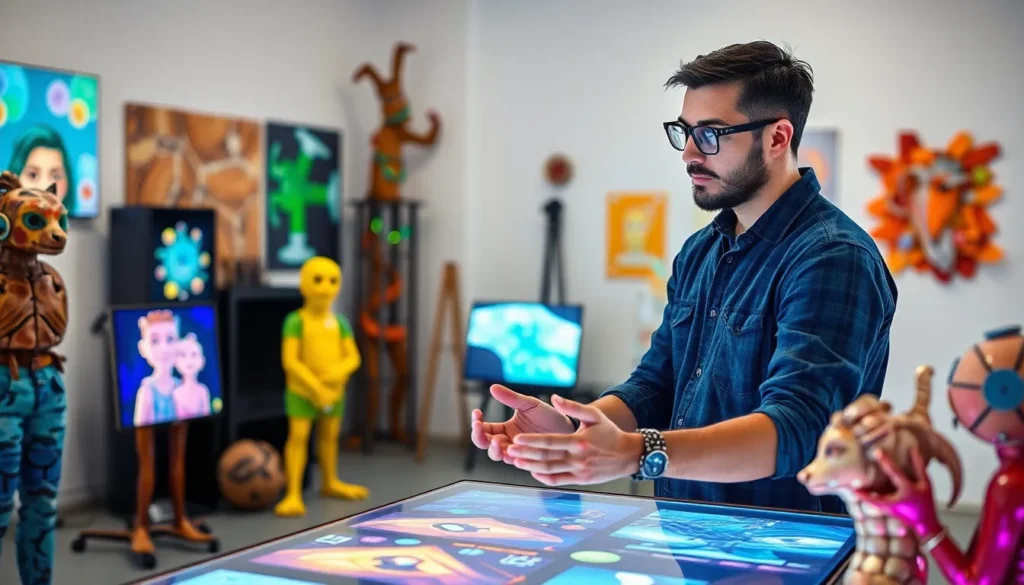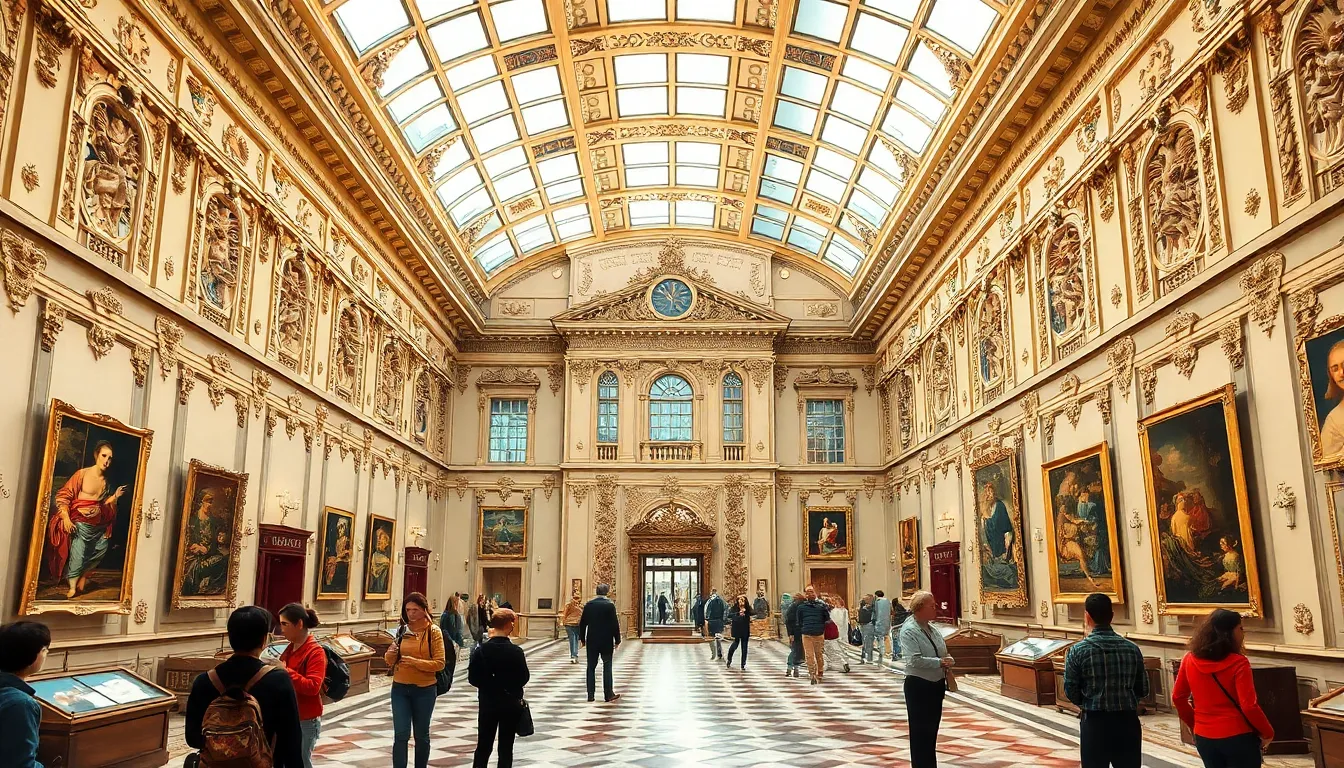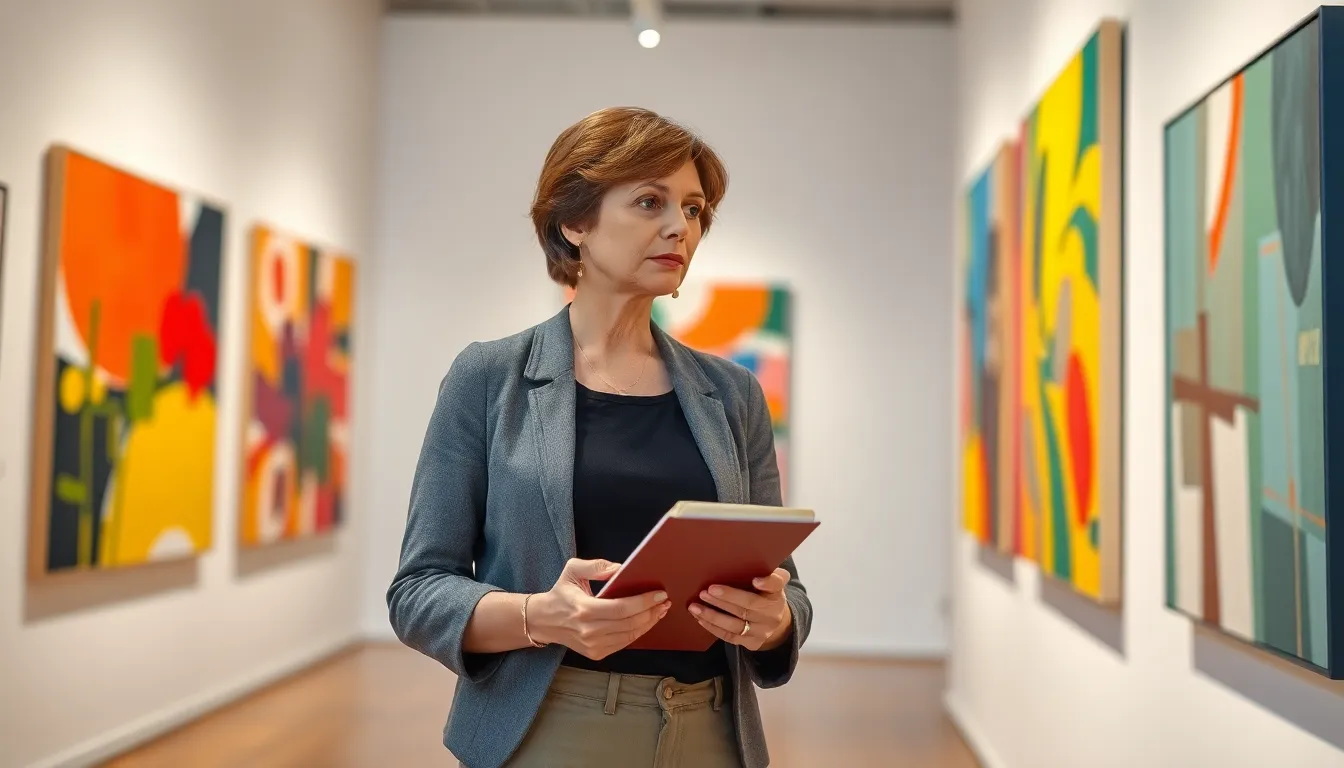Table of Contents
ToggleArt has always been a playground for creativity and innovation, but today’s artists are pushing boundaries like never before. From virtual reality masterpieces to eco-friendly sculptures, the art world is buzzing with exciting developments that blend technology and imagination. If you thought art was just about paint and canvas, think again—it’s a whole new ballgame.
Overview of Art Innovations
Art innovations significantly redefine creative expression. Contemporary artists embrace technology, utilizing tools like virtual reality and augmented reality to enhance their work. These tools offer immersive experiences, allowing audiences to engage with art in transformative ways.
Environmental sustainability also plays a crucial role in modern artistic practices. Artists increasingly choose eco-friendly materials, such as recycled plastics and organic pigments. Examples include sculptures made from repurposed items that highlight the importance of environmental responsibility.
Collaboration across disciplines further drives innovation. Artists partner with scientists, engineers, and technologists to create multidisciplinary projects. Such collaborations foster unique creations that challenge conventional definitions of art.
New formats emerge as digital art gains popularity. The rise of NFTs (non-fungible tokens) allows artists to monetize their digital work while maintaining ownership. This movement exemplifies how the art market evolves alongside technology, creating opportunities previously unavailable.
Art institutions adapt by incorporating innovative practices into exhibitions and curatorial strategies. They invest in interactive installations that invite participation, transforming the viewer’s role from passive observer to active participant.
Collectively, these advancements reflect a significant shift in how art is created, experienced, and valued. Art innovations push boundaries and inspire future generations of creators.
Historical Context of Art Innovations

Art innovations trace back through pivotal moments in history that shaped evolving cultural landscapes. Key movements reveal how artists challenged norms and embraced new techniques.
Key Movements in Art History
Renaissance marked a rebirth of classical ideas, inspiring artists like Leonardo da Vinci and Michelangelo to explore humanism and perspective. Baroque embraced dramatic expression, utilizing light and shadow to evoke emotional responses. The Impressionist movement shifted focus toward capturing fleeting moments, introducing new approaches to light and color. Modernism broke away from tradition, encouraging abstract forms and personal expression. Each movement laid groundwork for contemporary practices that continue to evolve, merging traditional techniques with innovative concepts.
Influence of Technology on Art
Innovations such as photography revolutionized artistic expression, enabling real-time documentation. The introduction of digital tools shifted how artists create, offering new mediums for experimentation. Virtual reality provides immersive experiences that engage audiences on deeper levels. Artists harness augmented reality to enhance interaction, blurring lines between physical and digital realms. Developments in 3D printing allow for tangible creations that challenge material boundaries. Each technological advancement not only enriches artistic methods but also redefines the audience’s role in the creative process.
Contemporary Art Innovations
Contemporary art innovations encompass a variety of transformative practices that redefine creative expression. These innovations leverage technology and sustainability to engage the audience in unprecedented ways.
Digital Art and Its Impact
Digital art significantly influences the contemporary art landscape. Artists now utilize software and hardware to create stunning visuals that weren’t possible before. Skills in coding and digital design foster new forms of expression, making art more inclusive. The accessibility of digital art tools empowers diverse voices, enhancing representation within the art world. This art form expands distribution channels, allowing for global reach through online platforms. Prominent auctions have showcased the financial viability of digital assets, illustrating how NFTs create new market dynamics. Collectively, these changes reflect a paradigm shift in how art is produced and consumed.
Sustainable Practices in Art
Sustainability increasingly informs modern artistic practices. Eco-friendly materials like recycled plastics and organic pigments have surged in popularity among artists. Artists use these materials to convey environmental messages while minimizing their ecological footprint. Innovative techniques, such as upcycling, allow for a creative reuse of waste, transforming it into valuable art pieces. Collaborations with scientists often lead to discovering sustainable methods that enhance artistic expression. Exhibitions spotlighting these practices foster greater awareness of environmental issues, encouraging viewers to reflect on their role in sustainability. Thus, the commitment to eco-conscious art practices shapes not only the artwork but also the overarching narrative of contemporary art.
Notable Artists Driving Art Innovations
Contemporary artists significantly influence art innovations, pushing boundaries through experimental techniques and new materials. Their work reflects an intersection of creativity and technology.
Profiles of Influential Artists
Ai Weiwei, a prominent figure, challenges political norms and draws attention to human rights issues. He utilizes installations and social media to engage audiences on profound societal topics. Yayoi Kusama, known for her immersive environments, uses repetition and bold colors to explore themes of infinity. Her art creates spaces that invite viewers into her unique perspective. Moreover, Damien Hirst pushes the envelope with his conceptual art, employing unconventional materials like animal specimens to spark dialogue on life and death.
Unique Techniques and Styles
Immersive installations characterize Kusama’s art, creating enveloping experiences that evoke emotional responses. Weiwei often incorporates found objects in his work, encouraging conversations around cultural identity and heritage. Hirst experiments with various media, including sculpture, painting, and mixed media, demonstrating versatility in artistic expression. The use of digital tools enables artists to enhance their work, with augmented reality applications transforming static pieces into dynamic narratives. Innovative approaches like these reshape audience engagement, making art more interactive and accessible.
Future Trends in Art Innovations
Art continues to evolve, showcasing innovative methods and practices. Several trends indicate the future direction of artistic expression.
Predictions for Emerging Art Forms
Emerging art forms will likely blend technology with traditional practices. Artists might explore concepts like generative art, where algorithms create unique pieces. Installations that incorporate interactivity may engage viewers more deeply. The use of artificial intelligence in creating artworks could shift the perception of authorship. Collaborations with other fields, such as biology or architecture, may also redefine artistic boundaries. Expect to see environmental themes further integrated into art that raises awareness of sustainability.
The Role of Virtual Reality in Art
Virtual reality will transform the way audiences experience art. VR technology enables immersive environments where users can interact with art on a personal level. Artists may create virtual galleries that bypass physical limitations, broadening accessibility. Experiences designed for VR could offer unique narratives that traditional mediums cannot capture. Integration of virtual reality in educational settings may help foster creativity among students. Artists are harnessing VR to pose questions about identity and existence, enriching the cultural conversation.
Art innovations are reshaping the creative landscape in profound ways. By embracing technology and sustainable practices artists are not just redefining their work but also the audience’s experience. The collaboration between various disciplines is fostering a culture of creativity that transcends traditional boundaries.
As new forms of expression emerge the art world continues to evolve. The integration of virtual reality and interactive installations offers exciting possibilities for engagement and exploration. This dynamic shift encourages a deeper connection between artists and viewers while promoting environmental awareness.
The future of art holds endless potential. With each innovative step taken artists are poised to inspire and challenge societal norms, ensuring that art remains a vital and transformative force in our lives.



